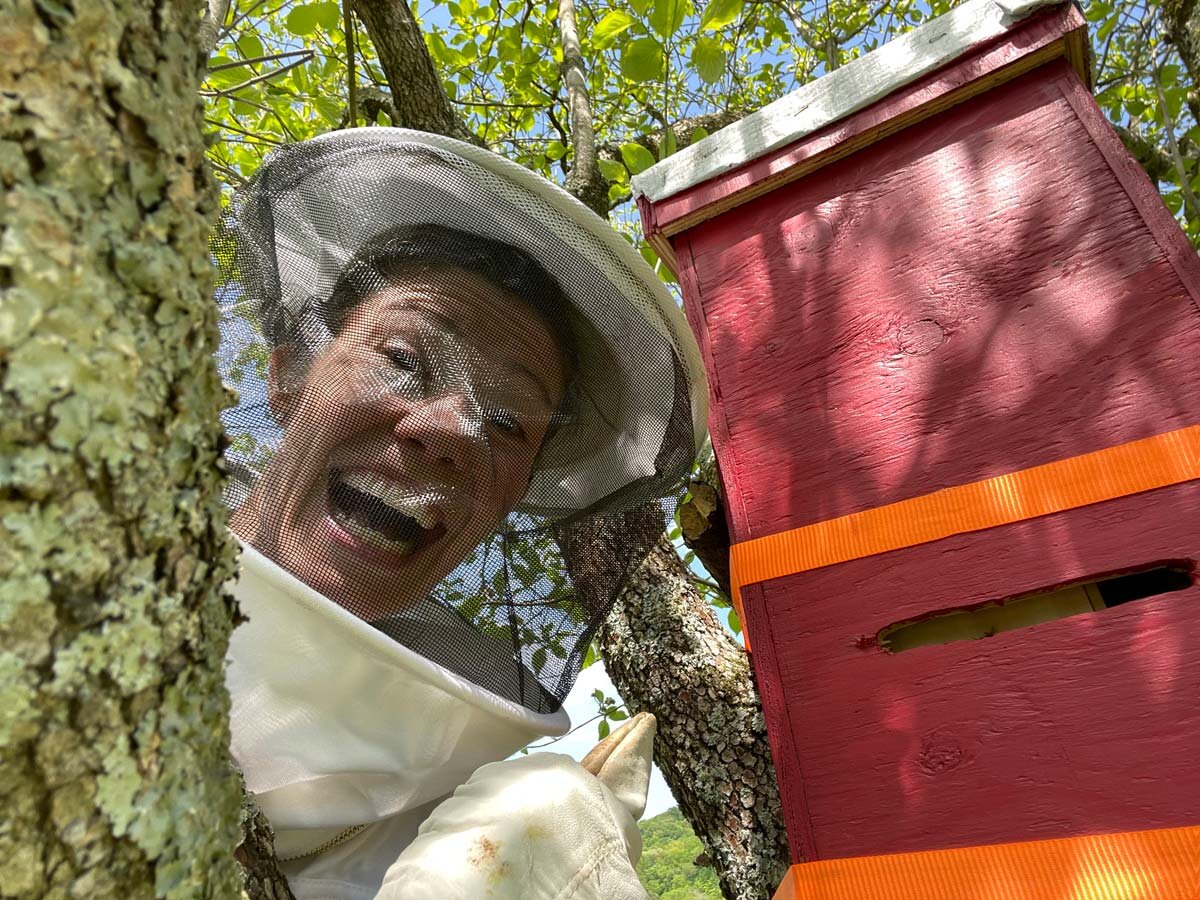How to Capture a Bee Swarm (Get FREE Bees!)
Learn how to prevent beekeeping from becoming an endless money pit, and begin a successfully thriving bee colony by trapping local bees for your hives. In this post you’ll learn how to capture a bee swarm with just a few basic supplies.
In my post Beekeeping on the Homestead, I shared my ups and downs with beekeeping on our homestead in Seattle, and what I learned to improve the process along the way. Now that we have established our new homestead in Nashville, I’m ready to begin new beehives with local bees, because harvesting that sweet honey is so incredibly rewarding.
What is bee swarm trapping?
When a bee colony becomes too large, it will split in half looking for a new place to set up a hive. Worker bees notice that it’s starting to seem a little crowded in the hive, so they’ll send drone bees out to find new potential home sites.
They’ll also start encouraging their queen to get fit enough to fly away with them and try to keep her busy so she doesn’t lay new eggs in the hive.
Beekeepers set up bee swarm traps as a place for these bees to relocate, which in turn can provide the beekeeper with a whole new colony of bees, already adapted to the local climate and bonded to their queen. Win, win, win, win!
What are the benefits of bee swarm trapping?
Bees are expensive, there’s a really specific ordering window for them, and it’s always first come, first serve.
Trapping wild bees not only saves money, but also provides bees that have already survived a winter in the local environment making them more resilient, more adapted to and aware of the local food sources. In a nutshell, they’re more likely to survive.
When do bees swarm?
Bee swarm season lasts just a few weeks and is generally in late spring/early summer.
They never swarm in the rain, so some years it’s later than others, but usually happens between April and May.
If you are not yet familiar with your climate, speak with a local beekeeper to find out when they generally swarm in your area.
PRO-TIP: Find a local beekeeping club, they are a fantastic resource for beekeeping information, but I’ve also met a lot of my favorite local homesteaders and I even met someone who would become a long-term mentor at a beekeeping meeting.
Where Do I Find Traps Or How Do I Make Traps?
You can purchase traps, but I made my own bee traps using plans similar to these. If you’re wanting to keep costs low, this is the way to go.
SUPPLIES NEEDED:
14’’ wide aluminum flashing - available from your local home center.
2 ratchet straps per trap - I use pull straps from the lid to the trap and a ratchet strap to attach to the tree. Here are some straps I just ordered to try this year, it’s the best price on ratchet straps I’ve found.
6 deep frames per trap - ideally at least one of which has drawn/used comb (if available). This can be the limiting factor on how many traps to make, so count your frames!
Is a trap all I need?
A scent can help attract bees to your trap. I used Swarm Commander Gel and the Swarm Commander Super Lure, but you could alternately use lemongrass essential oil. Lemongrass scent emulates the pheromone scent that the bees put off.
Where is the best place for the traps?
My beekeeping mentor (Craig @thebarefootforge) recommends the two major things to look for are “edge of topography and edge of treeline”. For example, a low tree in a field on a hill or along the treeline of a pasture facing out towards the pasture is great.
What is the best way to set up the traps?
The most important thing is to make sure that the trap is nice and level. Place the trap about six feet up the tree, and if you have a crook, that helps to stabilize it. Once you have your trap level, secure it with ratchet straps.
How long should I expect to wait?
Within two weeks, I found bee activity in both my traps. Craig recommends waiting until you see a bee with pollen on its legs going into the trap, then giving the bees two weeks beyond that date to do anything with the hive.
The bee with pollen is a great indicator that the hive has settled in the trap and they’ve begun drawing out comb. I’m never in a huge hurry, I want my bees to really get established before moving them.
We’ll give an update on how to transfer bees to their forever home once we relocate our new colony.














